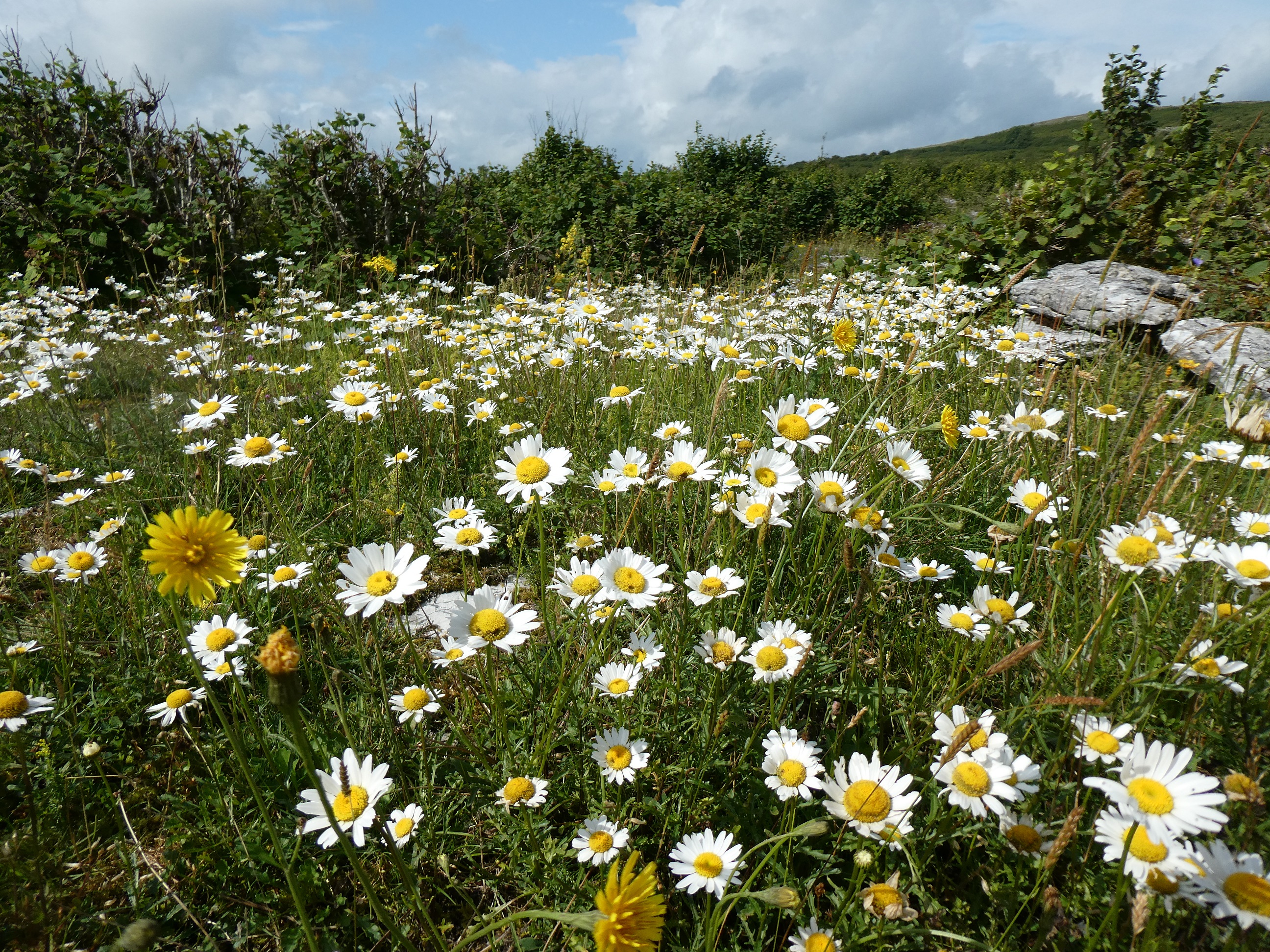Our Burren walk on Sunday, August 4th met on the Green Road just past the turn for the Lough Avalla Loop Walk. The weather was very inclement. It rained very heavily within the hour before our start time of 2 pm. It offered the prospect of a wash-out.
We parked in a field and assembled. Would there be anything to see? An introductory talk on the Burren’s butterflies was followed by showing some moth specimens trapped at Carran the previous night and a Grayling caught in the morning sunshine and a beautiful male Wall Brown fortuitously caught in the field before the walk. Moths shown were the Dark Spectacle which was well-received-seen head-on, pale tufts resemble eye-glasses, creating amusement in our group. A yellow Scalloped Oak well-named for its scalloped edges but not for the oak which it does not resemble. Oak is a larval foodplant for the moth, but so far a number of trees. The Burren Green was a star, though, living up to its name by being a green moth confined to the Burren. The moth settled happily on one lady’s coat and refused to depart.
We proceeded to the nettle patch near the field edge. The nettles were very vigorous with hundreds of Small Tortoiseshell caterpillars from at least three growth stages (instars). Folded leaves were opened to show a solitary Red Admiral larva in each one. A thistle patch held Painted Lady caterpillars, feeding as quietly as the Red Admirals. The larvae and their behaviour received great attention from our enthusiastic group. The open feeding habits of the Small Tortoiseshell larva contrast sharply with the solitary, well-concealed strategy of its relatives-why is this? Do the Small Tortoiseshells need to bask openly to digest food? Are the softer-bodied Red Admiral and Painted Lady larvae more susceptible to being stung by parasitoid wasps? These are possible reasons for the different living arrangements.
A Ringlet and Meadow Brown butterfly were spotted and closely approached, their eye-spots providing a ready definer as members of the “brown” family. The placement of spots around or near wing edges deflects bird attacks away from the vulnerable head allowing the butterfly to escape with just a nip to the wing edge.
About an hour and forty minutes into our event, the swollen clouds burst. We closed our event but had seen a surprising amount for the weather we had. Thanks to everyone who made the trip. Everyone was very appreciative which made up for the damp conditions. Thanks also to John Marrinan for letting us park in his field and to the Burrenbeo Trust who helped to organise the well-attended event.
See the Burrenbeo Trust Facebook page for images of the event.


